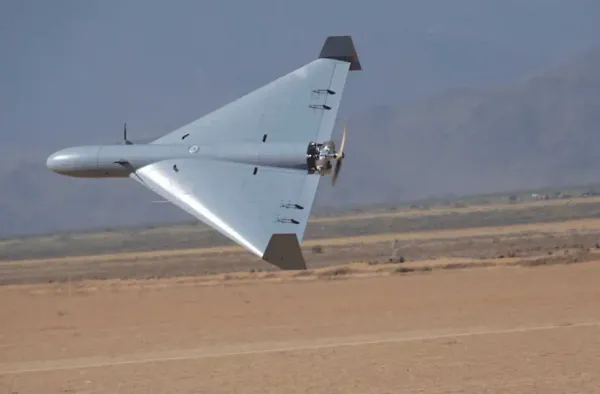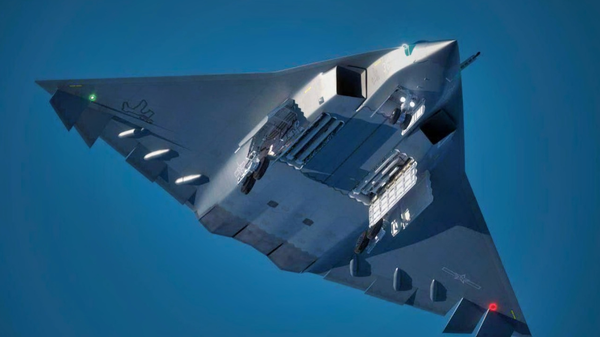Flight planning might seem relatively simple to the common public, but in the eyes of a pilot, a lot happens behind the scenes to pick the best possible route.
It's so much more than drawing the most direct line from A to B and calling it a day. In this article, I'll give you a sample of some of the major factors that decide the route of any particular flight.
Great Circle Route
While one might think a direct A-to-B straight line (also known as flying a direct heading) is the most effective way to plan a flight, it actually isn't.
Because of the earth's rotation, a flight plan on a single heading will end up hundreds of miles from where it wanted to be. That's why great circle routes are considered when pilots initially plan flights (especially long-distance ones).
For example, if you've ever watched flights across tracking websites and apps, you might notice that overseas flights tend to go up to the north as they make their way across rather than in a straight line toward the destination.
This is that great circle route compensation, as it will put aircraft where they need to be, considering all of the earth's rotation.
Navigational Aids
While most aircraft today have state-of-the-art navigational systems, pilots will always try to plan routes that put aircraft in a position to safely navigate out of an undesirable scenario in case any equipment onboard the aircraft fails.
It also gives the pilots better communication with other controllers and aircraft if they choose to set their flight over places that have known ground-based equipment that can be tuned into.
Weather
I'm going to split this one into two parts. The first will cover the dynamic side of weather. This involves what's happening from ground level up (aka clouds, turbulence, and precipitation) and is the most important aspect when planning the initial departure and final approach phases of flight.
Pilots always want to avoid as much weather as possible, so if any type of adverse condition lies near a pilot's intended direction of travel, they will attempt to plan around it entirely, or only fly through the less significant part of the system.
Pilots will avoid other weather impacts, such as ice, turbulence, and even something as simple as a large cloud cover, will be avoided by pilots if they deem the conditions detrimental to the most effective route of a flight.
Winds/Altitude
This is arguably the most important part of flight planning, as winds and cruise altitude can greatly impact the amount of fuel burned in flight.
Planning a route through headwinds will not only increase fuel burn, but depending on the aircraft's range and length of flight, it could result in an extra fuel stop being required.
This problem becomes apparent during the winter months in the United States, as even the best routes for east-to-west coast flights can require fuel stops due to the immense strength of the jet stream during these months.
However, planning flights with more favorable winds can result in shorter flight times and better on-time performance if a flight leaves its origin late. Picking the right combination of the best altitude and wind results in the lowest fuel burn possible.
Summary
While these are the biggest factors in flight planning, many more lower-impact considerations can be made when planning air routes. The ultimate goal is to pick the fastest, safest route possible, minimizing fuel burn and maximizing passenger comfort.
Honestly, it's a demanding job that can take lots of work, and that's why airlines have dedicated dispatch workers who create the optimal routes for their pilots to fly on their day-to-day flights. Next time you fly as a passenger, ask your pilot about how that particular flight was planned, and you will see just how much work goes into getting from one place to another.
JetBlue Opens First-Ever ‘BlueHouse’ Lounge at JFK Terminal 5 » Air France Suspends Paris-Manila Service for Summer 2026 » GTF Storage Crisis Deepens: 835 Aircraft Grounded as Pratt & Whitney Recalls Surge Post-Mid-Year »
Comments (1)
 Kirk Tuttle
Mostly, your article is without basis of fact if your intent was a story about flight planning of transport category aircraft operations.
Bob’s flying service Pilots may do their own flight planning.
Most (if not all) airline companies have an AOC or other facility where licensed Aircraft Dispatchers develop, create and issue the Flight Plan(s). Pilots then are provided the completed document and in most cases are required to then sign same reflecting their agreement with the plan.
Rarely in the thousands of flight plans created by Dispatchers are there any changes made after Pilot interaction.
It’s really too bad that you did not do due diligence prior to publishing this story of fiction.
Kirk Tuttle
Mostly, your article is without basis of fact if your intent was a story about flight planning of transport category aircraft operations.
Bob’s flying service Pilots may do their own flight planning.
Most (if not all) airline companies have an AOC or other facility where licensed Aircraft Dispatchers develop, create and issue the Flight Plan(s). Pilots then are provided the completed document and in most cases are required to then sign same reflecting their agreement with the plan.
Rarely in the thousands of flight plans created by Dispatchers are there any changes made after Pilot interaction.
It’s really too bad that you did not do due diligence prior to publishing this story of fiction.
Add Your Comment
SHARE
TAGS
INFORMATIONAL flightplanninghowpilotsdecideroutesand lengthRECENTLY PUBLISHED
 US Air Force to Launch New Experimental One-Way Attack Drone Unit
In a move that signals a tectonic shift in American airpower, the U.S. Air Force is preparing to stand up its first-ever experimental unit dedicated solely to "One-Way Attack" (OWA) drones.
NEWS
READ MORE »
US Air Force to Launch New Experimental One-Way Attack Drone Unit
In a move that signals a tectonic shift in American airpower, the U.S. Air Force is preparing to stand up its first-ever experimental unit dedicated solely to "One-Way Attack" (OWA) drones.
NEWS
READ MORE »
 Pentagon Alarm: China’s ‘Tailless’ 6th-Gen Fighter Prototypes Are Already Airborne
The Pentagon’s annual 2025 China Military Power Report (CMPR), released this week, has sent a clear signal to Capitol Hill: the race for air dominance is no longer a one-horse race. For the first time, the U.S. Department of Defence has formally acknowledged the rapid progress of China’s sixth-generation fighter programs, highlighting the successful flight testing of multiple "novel tailless" stealth prototypes.
NEWS
READ MORE »
Pentagon Alarm: China’s ‘Tailless’ 6th-Gen Fighter Prototypes Are Already Airborne
The Pentagon’s annual 2025 China Military Power Report (CMPR), released this week, has sent a clear signal to Capitol Hill: the race for air dominance is no longer a one-horse race. For the first time, the U.S. Department of Defence has formally acknowledged the rapid progress of China’s sixth-generation fighter programs, highlighting the successful flight testing of multiple "novel tailless" stealth prototypes.
NEWS
READ MORE »
 No "Mate's Rates" in the Sky as Qantas Bans All Staff (Including CEO) From New A350 First Class
In a move that signals just how "ultra" Qantas intends its new ultra-long-haul product to be, the Flying Kangaroo has made a rare and dramatic policy shift: barring all staff from its upcoming Airbus A350 First Class cabins.
NEWS
READ MORE »
No "Mate's Rates" in the Sky as Qantas Bans All Staff (Including CEO) From New A350 First Class
In a move that signals just how "ultra" Qantas intends its new ultra-long-haul product to be, the Flying Kangaroo has made a rare and dramatic policy shift: barring all staff from its upcoming Airbus A350 First Class cabins.
NEWS
READ MORE »



